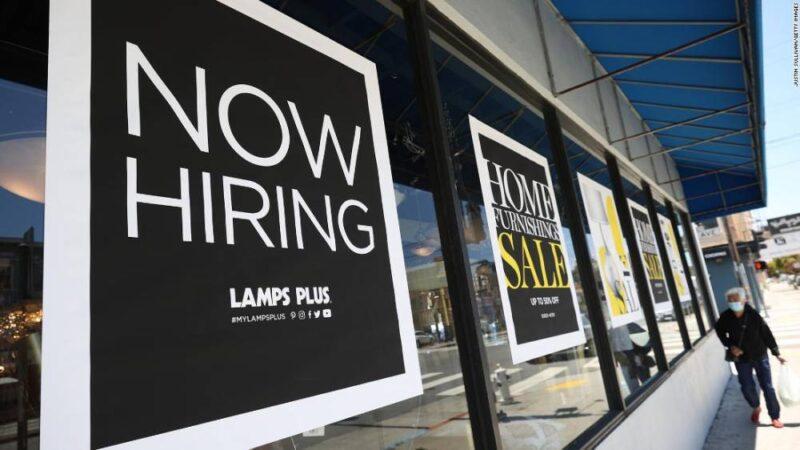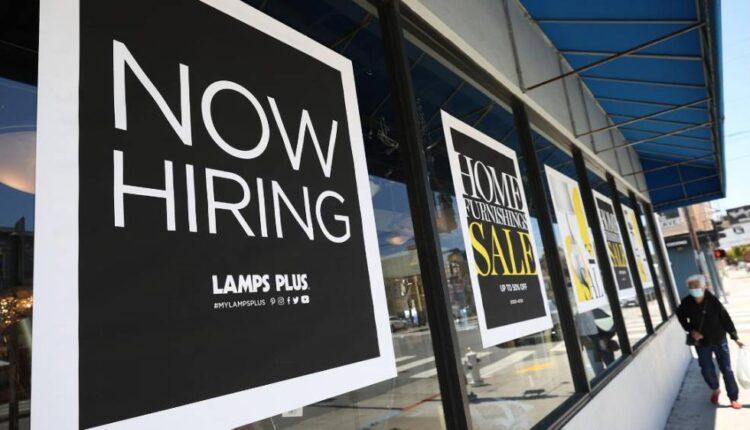A version of this story first appeared in CNN Business’ Before the Bell newsletter. Not a subscriber? You can sign up right here.
London (CNN Business)Signs of rising inflation around the world are keeping investors on edge. But in some corners of markets, pressure is easing, raising hopes that Peak Fear may have passed and central banks will be confident enough to sit tight.
What’s happening: The price of lumber, fed by a construction boom, has dropped 40% from the all-time high it reached in early May, while copper prices have fallen back 11%. Corn prices are 14% lower.Long-term bets on commodities just overtook bullish bets on bitcoin as the most crowded trade in markets, according to Bank of America’s latest survey of global fund managers. That could be a sign that the commodities surge, which is causing prices to rise, may have run its course.
Broader economic data closely monitored by policymakers is telling a different story, however.
US producer prices jumped a record amount last month, increasing 6.6% between May 2020 and May 2021, according to figures released Tuesday. In the United Kingdom, consumer prices leaped 2.1% in the year to May, the Office for National Statistics said Wednesday, with clothing, dining out and fuel getting more expensive.Read MoreThis jump above the Bank of England’s 2% inflation target wasn’t expected until later this year, according to its May monetary policy report. “While [consumer price] inflation remains well below the 5% rate recorded in the US, there has so far been more ‘reopening inflation’ in the UK than we had expected,” Paul Dales, chief UK economist at Capital Economics, said in a research note.This puts central banks in a difficult spot. Price pressures could be transitory, but there are still worries that inflation could be making a more permanent comeback after staying muted for decades. The Bloomberg Commodity Index remains just 1.9% below its recent peak.In that context, the Federal Reserve — which makes its latest policy announcement on Wednesday — is expected to indicate that it’s at least thinking about how to move away from the super-supportive policies it put in place during the pandemic, which have flooded the US economy with cash.”Partly because of the recent surprisingly strong inflation, the Fed is likely to begin discussing an exit from its ultra-expansive monetary policy,” Commerzbank’s chief economist Jörg Krämer recently told clients.On the radar: Investors want to know when the Fed will ease up on its massive asset buying program, which is expected to be the first major step it takes toward policy normalization. The Fed is still purchasing $120 billion in securities per month.”A change of course by the Fed, which is thus probably approaching, is always a critical matter for the markets,” Krämer said.Krämer thinks it’s too soon for Fed Chair Jerome Powell to officially signal a new course, though he’ll likely have to field difficult questions at his press conference. Instead, a real shift could come next quarter — well in advance of any actual moves, so markets have time to stomach them.
Corporate America is ready to go on a hiring binge
Corporate America wants to hire workers aggressively as the US economy races back to life following the pandemic.The Business Roundtable, an influential lobbying group comprised of top US executives, said Wednesday that its CEO economic outlook index has climbed to the second-highest level on record, behind only early 2018, when the Trump tax cuts were enacted.

CEOs signal stronger hiring plans than after the Trump tax cutsAnd companies are even more eager to expand their workforces today than they were following the tax windfall. A sub-index measuring CEOs’ plans for hiring surged to a record high during the second quarter.”CEO optimism near historic highs, particularly with record hiring plans, is a strong sign that we are climbing out of this unprecedented crisis,” Walmart CEO Doug McMillon, who serves as the chairman of the Business Roundtable, said in a statement.Some companies, including manufacturers and restaurants, have complained of a shortage of workers. The United States has a record number of job openings, which totaled 9.3 million as of April.To address this problem, the Business Roundtable urged the White House and Congress to allow enhanced unemployment benefits to expire in September.Business Roundtable CEO Josh Bolten said during a press briefing that the $300 boost to unemployment benefits are “keeping something of a lid on the overall supply of labor,” especially for lower-paid positions — while acknowledging that health concerns and childcare issues caused by the closure of schools and daycares also remain an issue.Earlier this month, President Joe Biden stressed that enhanced benefits won’t be extended. Many Republican-led states have already terminated them.But there’s been pushback from economists like Heidi Shierholz of the left-leaning Economic Policy Institute, who wrote in the New York Times last week that states “cutting pandemic programs are weakening their own recoveries,” and that higher wages, not ending benefits, could solve perceived issues with worker shortages.
The real estate market is flashing a 2008-style warning
The red-hot global real estate market is triggering concerns about bubbles that haven’t surfaced since the 2008 financial crisis.The latest: In research released this week, Bloomberg Intelligence notes that for many developed countries, house price-to-rent and rent-to-income ratios are higher than they were in advance of the Great Recession. Risk is most elevated in New Zealand, Canada and Sweden, but the United States and the United Kingdom are close behind.”Gauges of risk are flashing warnings at an intensity not seen since the run-up to the 2008 financial crisis,” economist Niraj Shah wrote.The International Monetary Fund’s global house price index, which tracks 57 countries, is “is well above its prior peak in 2008 and is set to rise further.”The drivers: Rock-bottom interest rates, government stimulus, lockdown savings, limited housing stock and optimism about the economic recovery from the pandemic are all fanning the frenzy.Shah writes that the period ahead is expected to be characterized by a “cooling rather than collapsing” market as interest rates stay low. Lending standards “are also in general higher than they were” ahead of 2008. But when borrowing costs do start to rise, real estate could “face a critical test.”
Up next
US housing starts and building permits for May post at 8:30 a.m. ET. The Federal Reserve’s latest interest rate announcement and a press conference with Chair Jerome Powell follows at 2 p.m. ET.Coming tomorrow: Earnings from Kroger (KR) and Adobe (ADBE).
Source: edition.cnn.com

